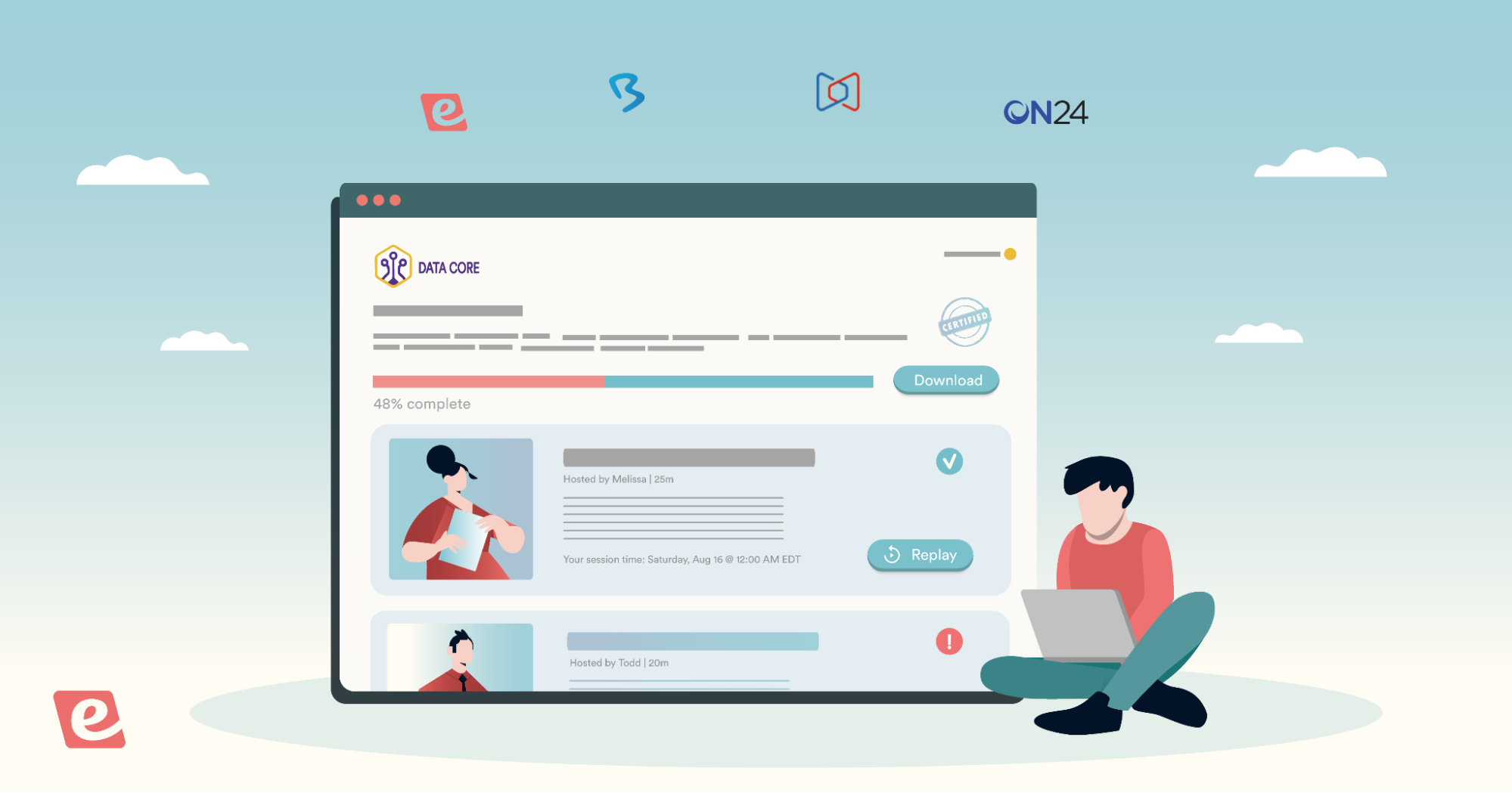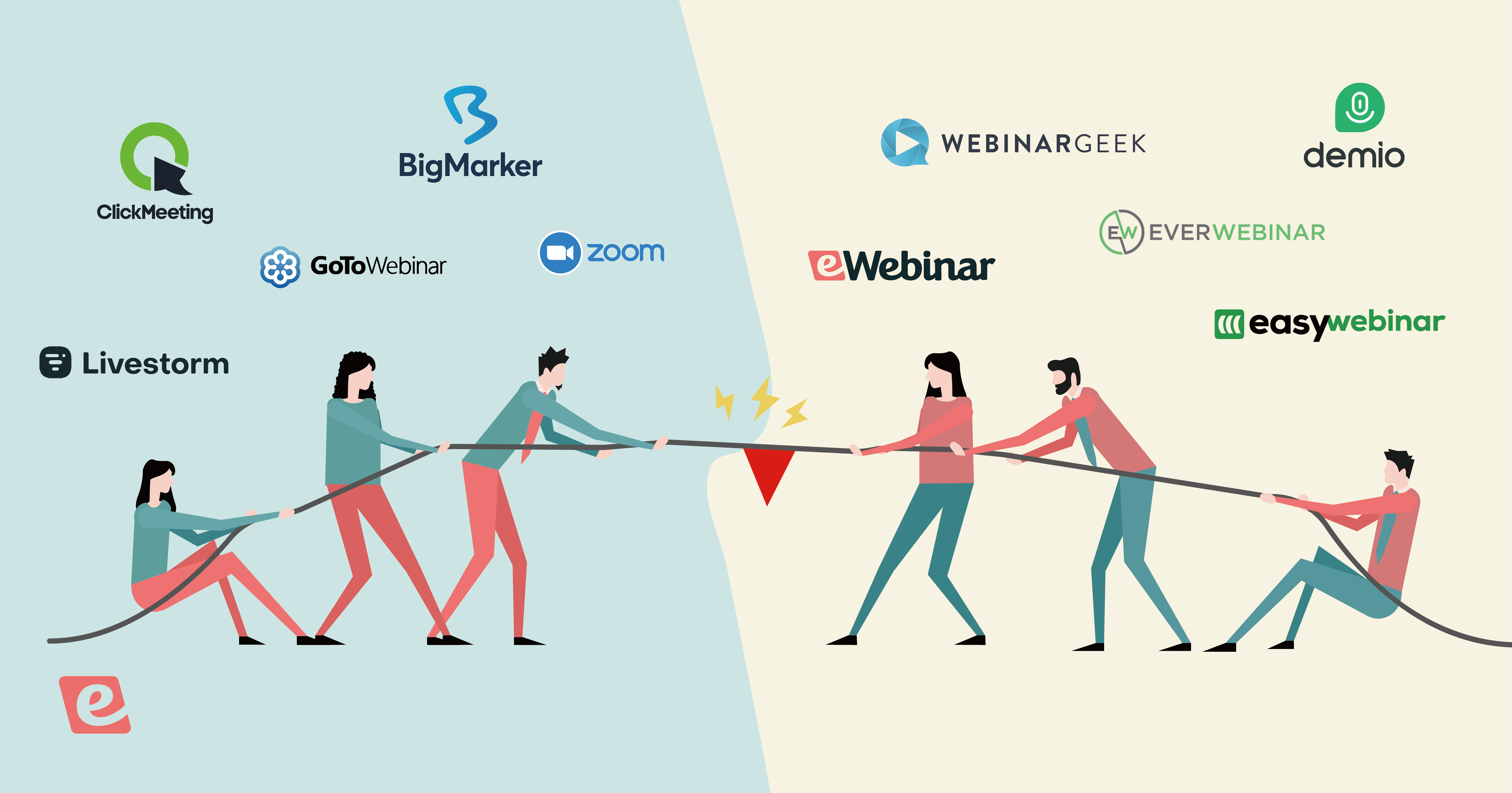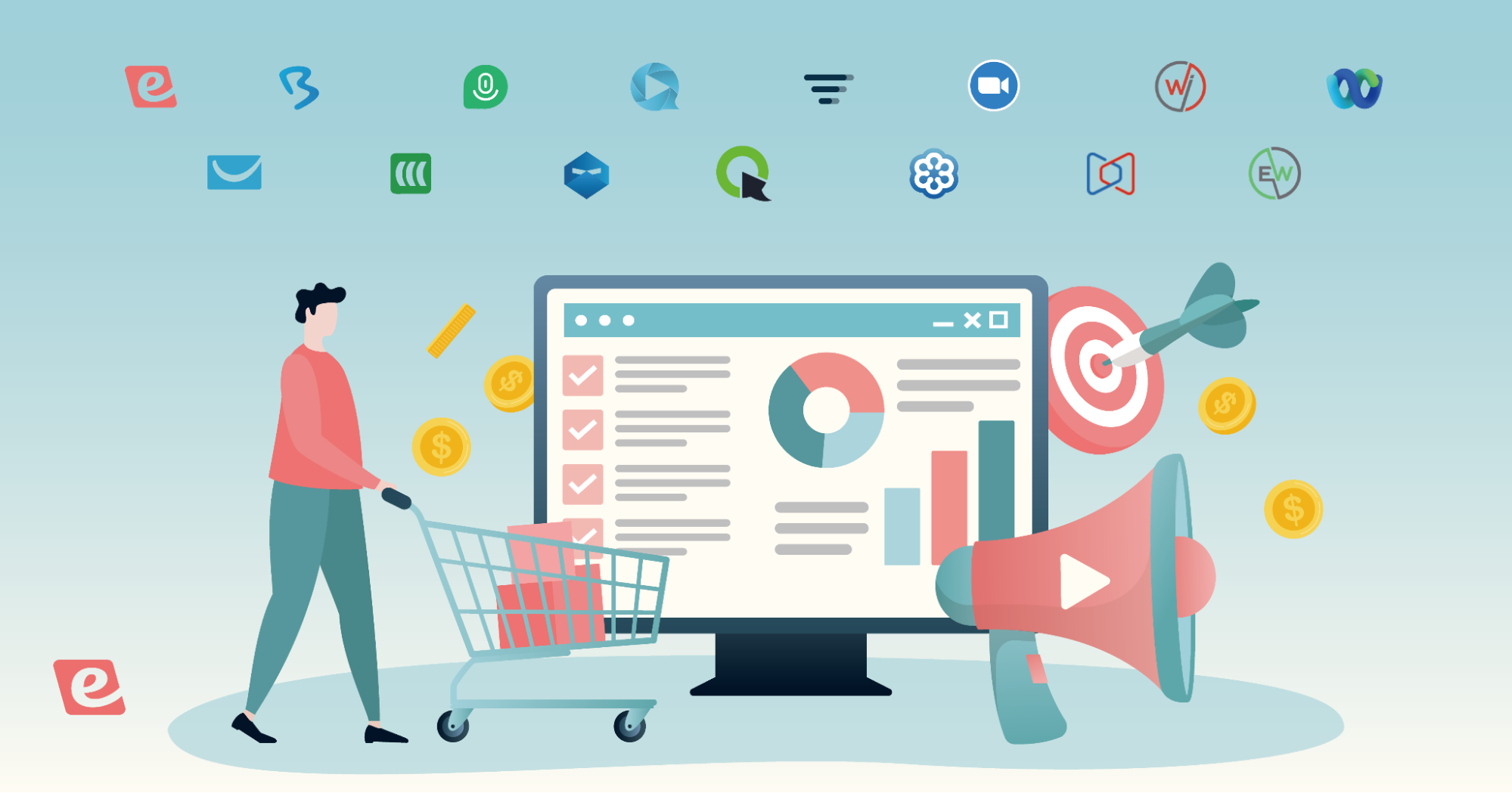Planning a webinar can be an overwhelming process and creating an agenda is just one piece of the puzzle. That said, getting this step out of the way sooner rather than later will actually make the rest of the planning process easier by giving you a roadmap to operate under.
This article will teach you everything you need to know about webinar agendas including:
Let's dive in!
What is a webinar agenda?
A webinar agenda is an outline of the topics you'll cover to give registrants an idea of what to expect during the presentation.
How to create a webinar agenda
In the days or weeks leading up to your webinar event, you'll need to go through the process of creating a great webinar agenda that covers all its bases. The sections below will delve deeper into how to create an effective webinar agenda!
1. Define webinar goals
Before creating an agenda (or undertaking any other form of webinar planning), you'll need to define the goal(s) for that specific webinar. A lead generation webinar for prospects will have very different goals (and thus a different agenda) than an onboarding webinar for existing customers.
2. Choose a topic
Once you've set the goal for your webinar, it's time to choose a topic that aligns with that goal. If you're trying to generate leads then you'll want to select a topic that your target customers would be interested in. Conversely, onboarding webinars should focus on the hurdles that new customers face.
3. Plan key takeaways
After choosing the overall topic (and ideally having a title as well), the next step will be to figure out which insights you want attendees to walk away from the webinar with. The number of takeaways will vary depending on the length of the webinar but three to five is a good ballpark to aim for.
4. Set your duration
Now that you know what to cover, you'll need to decide how much time you'll spend on each key takeaway. This will give you a general idea of how long the entire webinar will be while accounting for the introduction, transition time between topics, and closing remarks.
5. Structure the flow
Finally, it's time to structure the flow of your webinar into an agenda that you can use as a roadmap during the presentation itself. If we assume that your goal is lead generation and you're targeting content marketers then your agenda might look something like this:
Title: How to Drive Demand for B2B SaaS Companies with Organic Content Marketing
Duration: 60 minutes
-
0:00 - 0:05: Introduction
-
0:05 - 0:15: Differences between B2C and B2B content
-
0:15 - 0:30: 5 best practices for B2B content marketing
-
0:30 - 0:40: Content distribution for SaaS businesses
-
0:40 - 0:50: SaaS content marketing case studies
-
0:50 - 0:55: Q&A + FAQs
-
0:55 - 1:00: Closing remarks
When to share the webinar agenda
Ideally, you should be sharing your webinar agenda before, during, and after each webinar!
Before the webinar
Prominently display the webinar agenda on your registration page so that potential registrants know what they're signing up for. Ideally, you should have it visible "above the fold" so website visitors don't have to scroll down in order to see it.
You should also consider including it in your webinar confirmation emails so that registrants can review the agenda without having to return to the registration page. This is especially helpful when promoting an upcoming webinar that may be weeks away.
Lastly, you can even use the agenda as a playbook when promoting your webinar on social media. In practice, this would involve creating a separate post for each topic on the webinar agenda with a call to action at the end (linking to the registration page where people can sign up for the webinar).
During the webinar
Right after introducing yourself, take a minute to review the agenda at the start of your webinar to remind attendees what you'll be covering and put your audience members at ease for the remainder of the presentation.
You can also use visual aids throughout the webinar to represent which agenda topics have been covered so far. This could be displayed in the form of in-video graphics or a physical whiteboard next to the host.
For example, our automated webinar platform lets you add an agenda interaction that attendees can access anytime. This widget can be set to read-only or used to jump to specific sections of a pre-recorded webinar.

After the webinar
After the webinar ends, you can still reference the agenda in any follow-up sequences you send out. Including it in your post-webinar emails will remind attendees about the key takeaways from the presentation and instill a sense of learning that will increase the odds they return for future events.
You can even add a post-webinar survey and then ask attendees which topic on the agenda they got the most value out of. This will clue you in on similar topics that you can cover the next time around to show your audience that you're paying attention to their feedback.
If you really want to go the extra mile, you can stitch together a highlight reel of all the key agenda points covered during the webinar then embed that video in your post-webinar email sequence. These complications are easily shareable which gives them high virality potential.
How to optimize your webinar agenda
Optimizing your agenda may seem like a waste of time but it can actually have a huge impact on future webinars. The best way to optimize your webinar agenda is to track a few key metrics that highlight the areas that need further improvement.
Watch time
First of all, you need to measure the average watch time of your attendees to see how much time they're spending in the webinar before leaving. The more time attendees spend watching your webinar, the more likely they are to hear the call to action or convert after the presentation.
If your average watch time is low then you may need to reorder the takeaways in your webinar agenda to frontload the most valuable information. This will hook attendees in early on and keep them from leaving early.
Drop-off points
Beyond the raw number of minutes spent watching your webinar, it's also important to identify the drop-off points where attendees start leaving. Seeing where attendees drop off will help you restructure future agendas in such a way that minimizes early departures.
In addition, spotting a trend of people leaving at a certain point (e.g. halfway through the presentation) could also prompt you to make your call to action earlier. This will maximize the number of attendees who hear the webinar CTA and thus increase overall conversions.
Engagement rate
Aside from looking at the overall time spent watching your webinar, it's equally important to analyze how engaged attendees were during that time. Engaging webinars should encourage attendees to message in the chat, vote on polls, and participate throughout the presentation.
If you notice that the engagement rate is lagging behind the watch time then you'll want to create more opportunities for audience interaction and adjust the runtime on your webinar agenda accordingly. Remember that Q&A segments tend to go overtime so try to leave a buffer towards the end.
Attendee feedback
While quantitative metrics like watch time and engagement rate may be easier to measure, you should also factor in more qualitative feedback. This usually comes in the form of attendee responses to post-webinar surveys sent out via email after the presentation ends.
In addition to asking attendees to rate their webinar experience on a scale, you should prompt them to expand on what they'd like to see improved in upcoming events. Not everyone will respond but even a few suggestions can go a long way to fine-tuning your next webinar agenda.
Webinar conversion rate
Last but not least, look at the conversion rate on your webinar to see if it's delivering the results you were aiming for. If your webinar wasn't meant to generate sales but rather onboard existing customers then you could use equivalent metrics like activation or retention rates instead.
Regardless of which metric you use, the ROI on each webinar (in whatever form it may take) will deliver the ultimate verdict on the performance of your webinar agenda. Continuous optimization of your webinar agenda offers a reliable path towards getting better results.
Webinar agenda examples
The length and level of detail on your webinar agenda can vary widely depending on what your use case is. As such, we've included three examples to give you an idea of what your webinar agenda might look like.
Tip: The shorter a webinar's runtime is, the tighter your agenda will need to be.
1. Discussion panel webinar agenda example
Title: Annual Review of Trends in Agricultural, Clothing, and Healthcare Industries
Guests: Johnny Appleseed, Joe Bloggs, and Jane Doe
Duration: 90 minutes
-
0:00 - 0:05: Introduction
-
0:05 - 0:20: Guest speaker introductions
-
0:20 - 0:35: Johnny Appleseed on notable agricultural trends of 2025
-
0:35 - 0:40: Johnny Appleseed Q&A segment
-
0:40 - 0:55: Joe Bloggs on supply chain challenges for denim jeans
-
0:55 - 1:00: Joe Bloggs Q&A segment
-
1:00 - 1:15: Jane Doe on changes to HIPAA compliance
-
1:15 - 1:20: Jane Doe Q&A segment
-
1:20 - 1:25: Summary
-
1:25 - 1:30: Closing remarks
2. Lead generation webinar agenda example
Title: How to Drive Demand for B2B SaaS Companies with Organic Content Marketing
Duration: 60 minutes
-
0:00 - 0:05: Introduction
-
0:05 - 0:15: Differences between B2C and B2B content
-
0:15 - 0:30: 5 best practices for B2B content marketing
-
0:30 - 0:40: Content distribution for SaaS businesses
-
0:40 - 0:50: SaaS content marketing case studies
-
0:50 - 0:55: Q&A + FAQs
-
0:55 - 1:00: Closing remarks
3. Onboarding webinar agenda example
Title: Getting Started with eWebinar
Duration: 20 minutes
-
0:00 - 0:01: Introduction
-
0:01 - 0:02: What video to start with
-
0:02 - 0:03: How chat works in an automated webinar
-
0:03 - 0:04: Choosing an automated webinar template
-
0:04 - 0:05: Uploading your video
-
0:05 - 0:06: Setting the schedule
-
0:06 - 0:07: How to embed webinar countdowns on your website
-
0:07 - 0:08: Editing your email sequence
-
0:08 - 0:10: Adding interactions like polls and quizzes
-
0:10 - 0:12: Setting up chat
-
0:12 - 0:13: Building your landing page and registration form
-
0:13 - 0:15: Publishing and testing your webinar
-
0:15 - 0:16: Promoting your webinar
-
0:16 - 0:17: Reviewing your webinar analytics
-
0:17 - 0:18: Integrating with your CRM
-
0:18 - 0:19: Managing chat in your webinar
This last agenda example is actually pulled directly from our own onboarding webinar that we use to teach new users about how to automate their webinars using eWebinar. If you want to see how the agenda translates to an actual presentation, feel free to watch our onboarding webinar!


Webinar agenda template
Now that you're familiar with what webinar agendas typically look like, here's a template that you can use to create your own webinar agendas. All you have to do is fill in the blanks with information from your upcoming webinar!
Automated webinar agenda template
While you might think that you can use the same template above for an automated webinar, we wouldn't recommend it. Our automated webinars combine pre-recorded videos with live chat capabilities and 20+ interactions so you'll need to factor that in when creating your agenda.

To save you time, we've put together a standard webinar template that's ready to use out of the box. All you have to do is insert the description and takeaways. You can also explore our template library with specialized webinar templates for SaaS onboarding, online courses, real estate, and more!
Conclusion
As you can see, having a webinar agenda helps your presentation stay on track. This holds true whether you're hosting a presentation live or pre-recording a video that you'll use as an automated webinar. If you fall into the latter category, watch our automated demo webinar to learn more about eWebinar!











